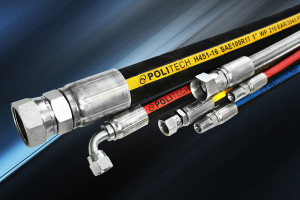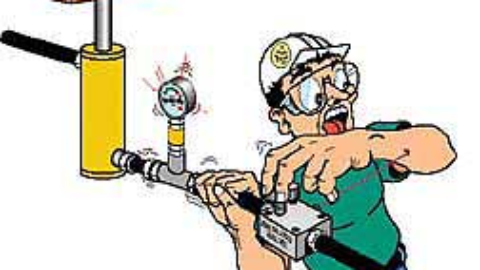 Fixing Hydraulic Hoses; Steps to Getting It Right
Fixing Hydraulic Hoses; Steps to Getting It Right
Last summer, a friend of mine was repairing a leakage in his lifter. I think he got hasty and couldn’t wait for the system to cool down. So he decided to fix it right after the machine came from the field. You don’t wanna know what happened to him… With all the heat and pressure in the system, my guy was washed up in some hot (really hot) hydraulic fluid from a burst hose.
There is a lot more work that goes into hose repair than just removal and fixation. There are dos and don’ts that you have to (actually it’s a must) know before you jump into pipe maintenances.
Luckily, Jim (my friend) wasn’t hurt. Be he surely learnt a good lesson. Politech offers you this free guide to help you do hose repairs safely when at home.
1 Identify the hose problem
You only fix the damaged hoses, or the old ones sometimes for precautionary purposes. But before you even think of replacing or repairing a hose, you have to know what is the problem with the hose. Some common snags include wear and tear, leaks, and aging.
SOS: It has never been a good idea to check leaks with your bare hands. Use a paper or leak detectors instead. The fluid chemical content, heat or something else can harm you.
- Know the components surrounding the hose
Sometimes the hose is placed in a congested joint and you might be required to remove some components to reach the hose end. If there are any loose connections and metals adjacent to the hose, tighten or low them to avoid them crashing on your head while you are repairing the hoses.
SOS: Consider relieving the pressure valves before removing the hose and other components. Otherwise, any fluid in there will blow out on your face. Don’t be like Jim.
- Remove the damaged part or the whole hose if necessary
The fact is that with that damaged area, the system ain’t going nowhere. So if there is a problem at the hose end such as a leaking coupling, cut the end off. But if the problem is somewhere in the middle, or the whole pipe is very (or very very) old, remove it.
SOS: Clean (properly) and plug the ends and the disconnected areas to clear any chances of debris getting in. Loosen both hose ends if you are replacing the whole pipe.
- Find the perfect hose for replacement
The fallen warrior fought well, now find a better substitute for him. Carry the damaged hose to a skilled manufacturer like Stretched Perfections to get a new one made right away. This will save you some good money and your precious time.
SOS: Never (and I repeat, Never) substitute an incorrect hose even temporarily. Don’t give any chances for such cheap mistakes to ruin your million-dollar earthmover.
- Reinstall the hose, use an adapter if necessary
It’s good to have a full kit of different adapters for cases when hydraulic couplings become a challenge. Install the adapters (if need be) in the necessary ports before connecting the hoses. Tight is enough; over or under-tightened connections can break hell loose unexpectedly.
SOS: Clean all the fittings before reinstalling the hoses and other connections. It pays to keep contamination at bay.
- Confirm suitable hose length and seal tightening
Wait, before connecting the other hose end, you need to make sure that the seal is installed correctly, and that it is tight. Also, ensure that the pipe isn’t too short or too long. When connecting, don’t twist the hose, but use a wrench instead.
SOS: The smallest of gaps left when fixing the seals can cause the biggest of damages in the hydraulic system. Be sure to seal any gaps. Okay?
Before getting into it
It is always advisable to use hoses and components produced by trusted manufacturers. Fake fittings can cost you heavily. Politech is a proud manufacturer of a diverse range of unique hydraulic components and systems, at relatively low prices. Call in at any time for help or to make your order.
We’ve got your back. Reach us through our contact page, email or office line; at any working hours. Wherever you are around the country, never worry. Just dial our number.


